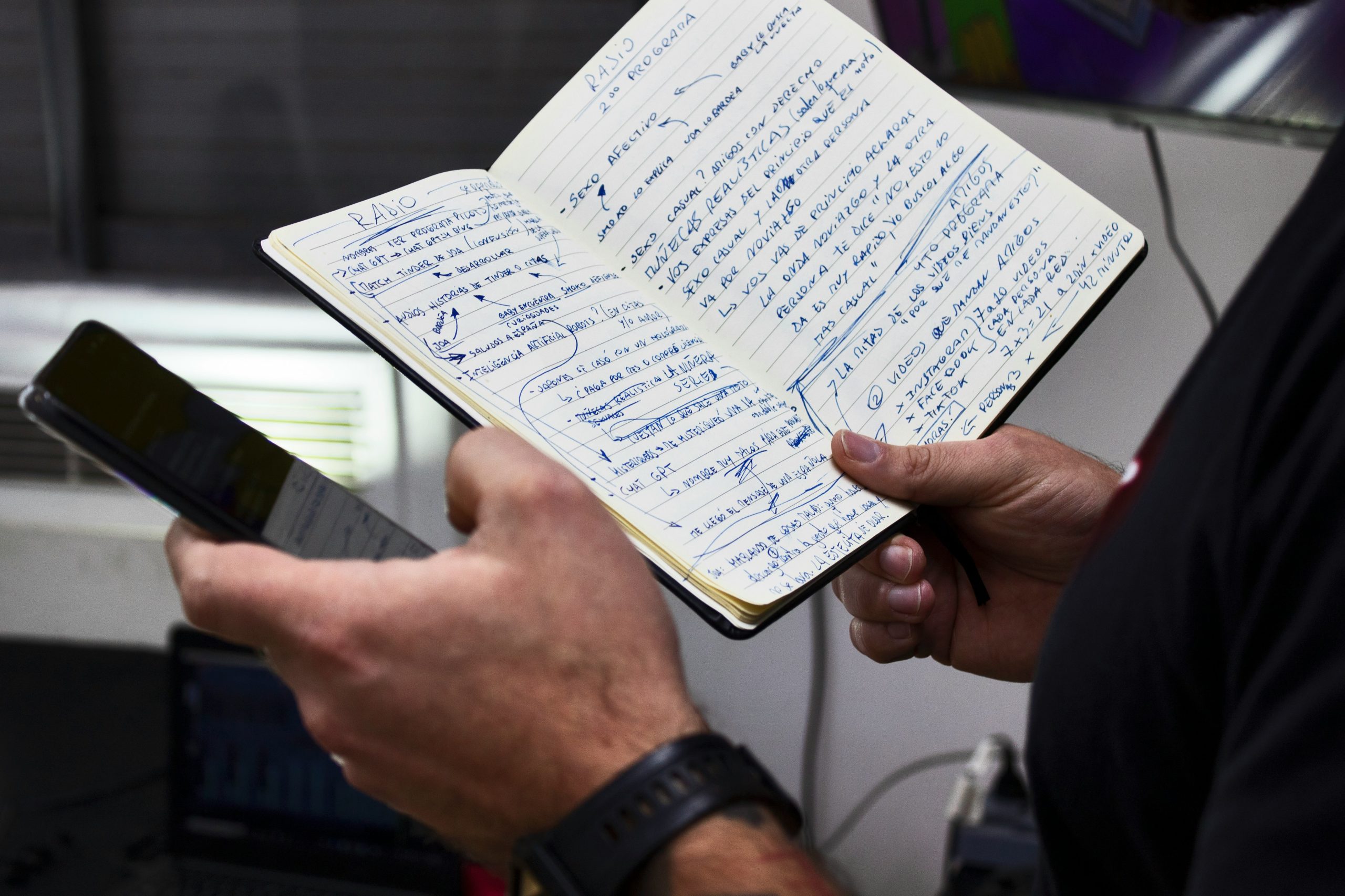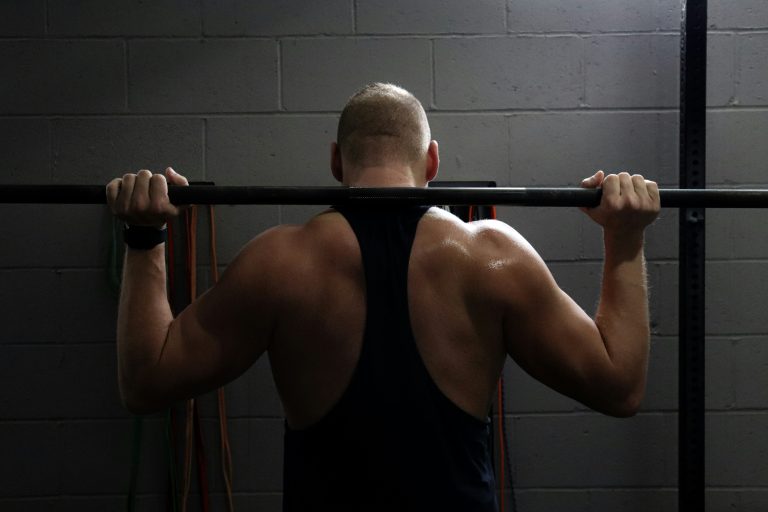Track Fitness Progress Like a Warrior: 7 Systems That Crush Mirror Obsession
Stop Staring at the Mirror: Track Progress Like a Warrior
The mirror is a liar. It shows you what you want to see when you’re feeling good and destroys you when you’re not. You’ve been there—flexing after one good workout, thinking you’re suddenly jacked. Or avoiding your reflection after a bad week, convinced you’ve lost everything.
This obsession with appearance is killing your progress. Real men track fitness progress through performance metrics, not Instagram-worthy mirror shots. While you’re worried about how you look, disciplined men are measuring what actually matters: strength gains, consistency streaks, and mental clarity.
The gym bros posting shirtless selfies? Most of them are weaker than they look. The guy quietly logging his reps, tracking his sleep, and monitoring his focus? He’s building something permanent. This isn’t about looking good for others—it’s about becoming unbreakable for yourself.
Performance beats appearance every time. When you shift your focus from the mirror to your metrics, everything changes. Your workouts become purposeful. Your diet becomes strategic. Your entire approach transforms from ego-driven posing to warrior-level discipline.
Why Aesthetic Obsession Destroys Progress
Mirror addiction turns you into a victim of your emotions. Good lighting makes you feel invincible. Bad lighting crushes your soul. You’re letting a piece of glass control your motivation. That’s weak.
I used to be trapped in this cycle. Every morning, I’d check my abs in the bathroom mirror. If they looked decent, I’d have a good day. If they didn’t, I’d skip the gym and eat garbage because “what’s the point?” This emotional rollercoaster kept me spinning my wheels for years.
The aesthetic obsession creates another problem: ego lifting. You load up the bar to impress others instead of focusing on form and progression. You choose exercises that make you look strong rather than exercises that make you actually strong. Your entire training becomes a performance for an audience that doesn’t care.
Social media makes this worse. You see fitness influencers with perfect lighting, ideal angles, and years of training experience. You compare your worst moments to their highlight reel. This comparison game is rigged against you from the start.
Real strength comes from consistency, not appearance. The strongest men I know don’t spend their time posing. They spend their time improving. They track their lifts, monitor their recovery, and measure their mental performance. They understand that looking strong is a byproduct of being strong.

Performance Over Appearance: The Mindset Shift
Performance tracking turns you into a scientist of your own success. Instead of asking “Do I look strong?” you ask “Am I getting stronger?” Instead of “Do I look lean?” you track “Did I hit my nutrition targets?” This shift changes everything.
When you track performance, emotions can’t derail your progress. Bad days become data points, not disasters. If you missed your target today, you analyze why and adjust tomorrow. No drama. No self-hatred. Just cold, hard improvement.
Performance metrics are objective. You either lifted more weight or you didn’t. You either completed your workout or you didn’t. You either got eight hours of sleep or you didn’t. The numbers don’t lie, and they don’t care about your feelings.
This approach builds real confidence. When you know you can deadlift 405 pounds, you don’t need mirror validation. When you’ve hit the gym 28 days straight, you don’t question your discipline. Your self-worth comes from what you’ve accomplished, not how you appear.
The masculine metrics that actually matter are strength, endurance, consistency, focus, and resilience. These qualities make you dangerous in life, not just in photos. A man who can squat heavy, think clearly, and stay consistent will dominate a man who just looks good in selfies.
How to Track Fitness Progress: The Four Pillars
Stop guessing. Start measuring. These four pillars will give you real data on your progress while building the habits that create lasting change.
Reps and Sets: Every lift, every set, every rep gets recorded. This isn’t just for ego—it’s for progression. When you see that your bench press went from 135×8 to 185×8 over six months, you have proof of your growth. Track your main lifts religiously: squat, deadlift, bench press, and overhead press. These compound movements build real strength and give you clear benchmarks.
Meals and Nutrition: You can’t out-train a bad diet, and you can’t track progress without knowing what fuel you’re putting in your body. Log your meals, not to obsess over calories, but to ensure consistency. Are you eating enough protein? Are you staying hydrated? Are you feeding your body like a machine or like a garbage disposal?
Sleep Quality: This is where most men fail. You’ll track every rep in the gym but ignore your recovery. Log your sleep hours, sleep quality, and how you feel when you wake up. Poor sleep destroys your gym results, kills your focus, and turns you into an emotional wreck. Eight hours isn’t a suggestion—it’s a requirement.
Mental Focus: Your mind is a muscle that needs training and tracking. Rate your focus levels daily on a scale of 1-10. Notice patterns. What improves your mental clarity? What destroys it? This awareness helps you optimize your environment and habits for peak performance.
These metrics work together. Better sleep improves your lifts. Better nutrition enhances your focus. Better focus leads to more consistent training. It’s a system, not a collection of random habits.

Tracking Recovery Like a Pro
Most guys track their workouts but ignore their recovery—and then wonder why they plateau.
If you’re sore every day, can’t sleep, or lose strength mid-week, your body is screaming for recovery. Recovery isn’t just about sleep (though that’s critical). It’s about rest days, mobility, hydration, and active recovery.
According to Sleep Foundation, consistent deep sleep is one of the top predictors of recovery. If you’re not getting at least 8 hours of sleep per day, it doesn’t matter how much you train; you’ll see below-average results.
Start tracking how sore you feel each day on a scale of 1–10. Did yesterday’s session leave you feeling destroyed? Adjust your intensity and workload. Measure your water intake—dehydration crushes performance.
Pay attention to your resting heart rate; if it’s trending higher than normal, that’s a red flag you’re not recovering properly. Train smarter, not harder. Recovery isn’t weakness, it’s strategy. Fuel your progress by listening to your body and making adjustments.
Creating Your Weekly Scorecard
A weekly scorecard transforms scattered efforts into systematic progress. This isn’t about perfection—it’s about awareness and improvement. You’ll quickly see which areas need attention and which habits are serving you.
Create a simple grid with days of the week across the top and your key metrics down the side. Each day, give yourself a score of 1-5 for each area:
Training: Did you complete your planned workout with proper form and intensity? A 5 means you crushed it. A 1 means you skipped or half-assed it.
Nutrition: Did you hit your protein target and avoid junk? A 5 means you ate like a warrior. A 1 means you ate like a child.
Sleep: Did you get 7-8 hours of quality sleep? A 5 means you woke up refreshed. A 1 means you’re running on fumes.
Focus: Were you mentally sharp and productive? A 5 means laser focus. A 1 means you were scattered and distracted.
At the end of each week, calculate your average for each category. This gives you a clear picture of where you’re winning and where you’re failing. No guessing. No emotional analysis. Just data.
The goal isn’t to score perfect 5s every day. The goal is consistent improvement over time. A week with mostly 3s and 4s beats a single perfect day followed by six disasters.

Visual Tracking for Real Results
Numbers tell the story, but visual tracking makes it stick. Create charts and graphs that show your progress over time. This visual feedback keeps you motivated during plateaus and helps you spot patterns you might miss in raw data.
Track your main lifts on a simple line graph. Plot your squat, deadlift, bench press, and overhead press over 12 weeks. Seeing that upward trend, even when progress feels slow, reminds you that you’re getting stronger.
Use a habit tracker to visualize your consistency. Mark each day you complete your workout, hit your nutrition targets, and get quality sleep. A month of mostly filled-in squares shows you’re building the foundation for long-term success.
I made a Complete Nutrition Guide specifically for men who want to eat clean and gain muscle.
Progress photos can work, but only if you control the variables. Same time of day, same lighting, same pose, once per month maximum. Use these as supplementary data, not primary motivation. Your lift numbers should be more exciting than your appearance.
Create a simple dashboard where you can see all your key metrics at a glance. This could be a notebook, a spreadsheet, or a phone app. The format doesn’t matter—consistency does.
The Gym PR Log: Your Strength Bible
Your personal record log becomes your strength bible. Every time you hit a new max, set a rep record, or complete a challenging workout, it goes in the book. This becomes proof of your evolution from weak to strong.
Record the date, exercise, weight, reps, and how it felt. Include notes about your form, energy levels, and what you did differently. These details help you replicate success and avoid mistakes.
Don’t just track your one-rep maxes. Track rep PRs too. Moving from 225×3 to 225×5 on bench press is real progress, even if your max didn’t increase. Volume PRs show that you’re building work capacity and muscular endurance.
Include bodyweight exercises in your log. Track your max push-ups, pull-ups, and plank hold times. These exercises reveal functional strength that translates to real-world performance.
Review your PR log regularly. When motivation is low, flip through your records and remember how far you’ve come. That skinny kid who struggled with 135 pounds is gone. You’ve built something stronger.
Mental Clarity Log: Training Your Mind
Your mind needs the same systematic approach as your body. A mental clarity log helps you identify what enhances your focus and what destroys it. This awareness allows you to optimize your environment and habits for peak mental performance.
Rate your mental clarity each day on a scale of 1-10. Include notes about what you did differently: sleep quality, caffeine timing, phone usage, meditation, reading, or stress levels. Look for patterns over time.
Track your productive hours daily. How many hours did you spend in deep, focused work? Not busy work or distracted scrolling—actual productive output. This metric reveals your true capacity and helps you identify your peak performance windows.
Monitor your decision fatigue. Rate how mentally drained you feel at different times of day. This helps you schedule important tasks during your high-energy periods and routine tasks during low-energy times.
Include wins and breakthroughs in your mental log. Moments of exceptional clarity, creative insights, or problem-solving victories deserve recognition. These positive data points reinforce the habits that create mental strength.

Tools & Systems
To develop and refine your mental clarity, leverage tools and systems that keep your progress efficient and measurable. Here are a few methods to enhance your practice:
- Time-Blocking Techniques: Assign specific blocks in your schedule for focused work, reflection, and rest, ensuring mental energy is optimized throughout your day.
- Weekly Review Frameworks: Regularly review your notes and logs to spot patterns, refine your strategies, and set intentional goals for the week ahead.
- Meditation Apps or Timers: Use tools like Headspace or Calm to integrate mindfulness exercises that support mental clarity and recharge focus.
Use the “Deep Work Hours” method: Count how many uninterrupted 60–90 minute work sessions you complete daily.
Leverage journaling for mindset shifts: One paragraph a day on what went well and what you’d improve trains clarity.
Use apps like Notion or Logseq to connect your thoughts, priorities, and energy levels into daily dashboards.
Long Game Mindset: Think in Months, Not Days
Short-term thinking kills long-term progress. You get excited about one good workout and disappointed by one bad day. Champions think in months and years, not hours and days. This perspective shift makes you unstoppable.
Plot your progress over 12-week cycles. Twelve weeks is long enough to see real change but short enough to maintain focus. Set specific, measurable goals for each cycle: add 50 pounds to your deadlift, complete 80% of planned workouts, or maintain an 8-hour sleep average.
Accept that some days will suck. Some workouts will feel terrible. Some weeks will show no progress. This is normal, not failure. The strong man understands that consistency over time beats perfection in the moment.
Track your overall trajectory, not daily fluctuations. If your average squat is trending upward over three months, you’re winning—even if last Tuesday’s workout felt weak. Trust the process and trust the data.
Build systems that survive bad days. Your tracking system should be simple enough to maintain even when motivation is low. If you can’t track it when you’re struggling, you won’t track it consistently.
At the end of every 12-week cycle, take time to audit your performance—both wins and failures. Journaling your “lessons from this cycle” is non-negotiable.
What systems stood strong? Where did you falter? Identify the distractions that pulled you off course. This brutally honest review is your weapon, sharpening your strategy for the next quarter.

Avoiding Ego Traps That Kill Progress
Ego lifting is progress poison. When you prioritize looking strong over being strong, you sacrifice long-term gains for short-term validation. Real strength comes from controlled progression, not impressive weight with terrible form.
Track your form quality alongside your lift numbers. Rate your form on each set from 1-5. Perfect form gets a 5, sloppy form gets a 1. This prevents you from celebrating PRs that were achieved through cheating or compromised technique.
Don’t compete with others in the gym. Compete with your previous self. The guy next to you might have been training for five years while you’ve been training for five months. His numbers are irrelevant to your progress.
Avoid the temptation to skip tracking after bad days. The days you don’t want to record are the days you need to record most. Honest tracking of failures teaches you more than celebrating successes.
Remember that strength is built in rep ranges, not just max attempts. Consistent work at 80-85% of your max builds more strength than constantly testing your limits. Save max attempts for planned testing days, not ego sessions.
I’ll never forget a guy at my old gym who always chased the heaviest lifts without caring about form. One day, he loaded up the squat rack with more than he could handle. Ego in overdrive, he barely hit depth, and his knees caved in on the way up.
The result? A torn ligament and months off training. Lesson learned—ego traps you, but proper tracking builds you.
Final Protocol: Measure What Matters
Stop living in mirror land. Start living in metric land. Track your lifts religiously. Monitor your sleep like your life depends on it—because it does. Rate your focus daily and optimize accordingly. Create systems that capture your progress automatically.
Your weekly scorecard becomes your accountability partner. Your PR log becomes your confidence builder. Your mental clarity log becomes your performance optimizer. These tools transform you from an emotional reactor into a strategic improver.
The mirror will always lie to you. Your metrics will always tell the truth. Choose truth. Choose data. Choose the path that builds real strength instead of fake confidence.
Set up your tracking system today. Not tomorrow. Not next week. Today. Open a notebook, create a spreadsheet, or download an app. Start with the basics: track your lifts, rate your sleep, and monitor your focus. Build from there.
Twelve weeks from now, you’ll have data showing your transformation. You’ll see strength gains, consistency improvements, and mental clarity enhancements. You’ll have proof of your progress that no mirror can distort and no emotion can deny.
The strongest version of yourself is built through measured improvement, not mirror worship. Start tracking. Start improving. Start becoming the man you’re capable of being.
The data is your sword. The mirror is your illusion.
Train with truth.







